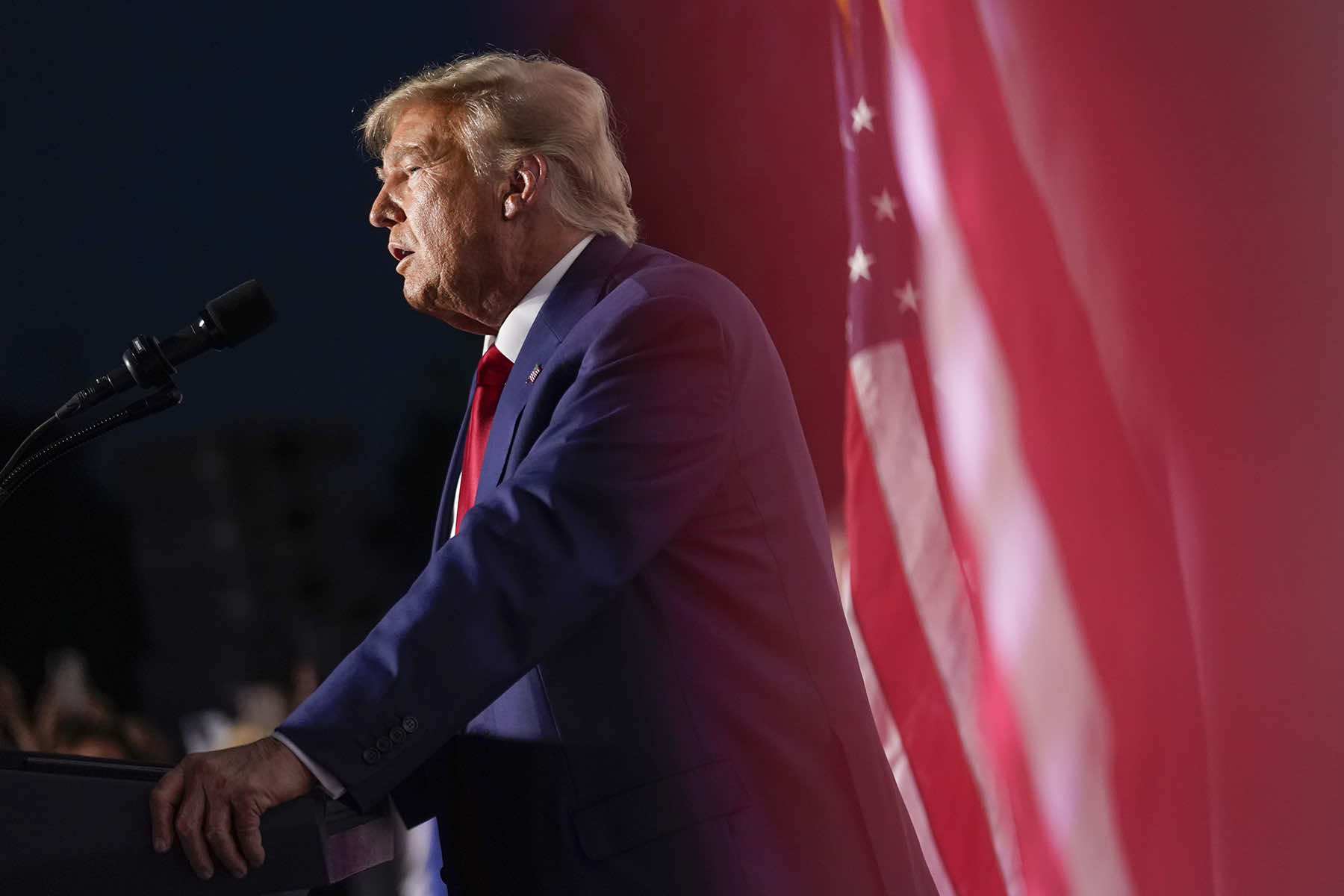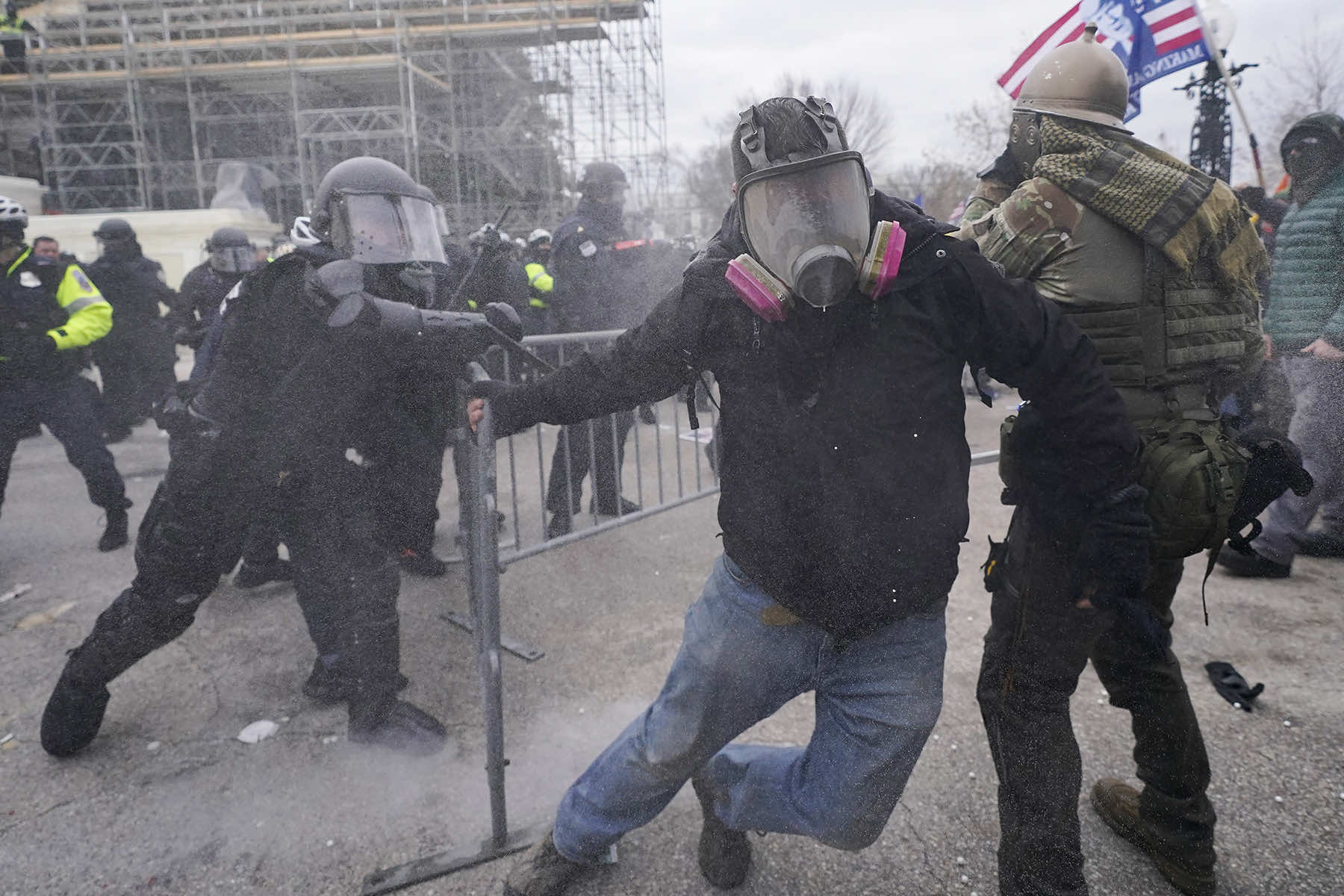
The “Washington Post” recently called Donald Trump’s vision for a second term as “Authoritarian.”
That vision includes mandatory stop-and-frisk. Deploying the military to fight street crime, break up gangs and deport immigrants. Purging the federal workforce. Charging leakers.
“In 2016, I declared I am your voice,” Trump said at his first 2024 campaign rally in Waco, Texas. “Today, I add I am your warrior. I am your justice. And for those who have been wronged and betrayed, I am your retribution.”
How do we describe what Trump wants for America?
“Authoritarianism” isn’t adequate. It is fascism. Fascism stands for a coherent set of ideas different from – and more dangerous than – authoritarianism.
To fight those ideas, it’s necessary to be aware of what they are and how they fit together.
Borrowing from the cultural theorist Umberto Eco, the historians Emilio Gentile and Ian Kershaw, the political scientist Roger Griffin, and the former US secretary of state Madeleine Albright, I offer five elements that distinguish fascism from authoritarianism.
1. The rejection of democracy, the rule of law and equal rights under the law in favor of a strongman who interprets the popular will.
“The election was stolen.” (Trump, 2020)
“I am your justice … I am your retribution.” (Trump, 2023)
Authoritarians believe society needs strong leaders to maintain stability. They vest in a dictator the power to maintain social order through the use of force (armies, police, militia) and bureaucracy.
By contrast, fascists view strong leaders as the means of discovering what society needs. They regard the leader as the embodiment of society, the voice of the people.
2. The galvanizing of popular rage against cultural elites.
“Your enemies” are “media elites”, … “the elites who led us from one financial and foreign policy disaster to another”. (Trump, 2015, 2016)
Authoritarians do not stir people up against establishment elites. They use or co-opt those elites to gain and maintain power.
By contrast, fascists galvanize public rage at presumed (or imaginary) cultural elites and use mass rage to gain and maintain power. They stir up grievances against those elites for supposedly displacing average people and seek revenge. In doing so, they create mass parties. They often encourage violence.
3. Nationalism based on a dominant “superior” race and historic bloodlines.
“Tremendous infectious disease is pouring across the border.” (Trump, 2015)
“Jewish people that vote for a Democrat [show] great disloyalty.” (Trump, 2019)
“Getting critical race theory out of our schools is … a matter of national survival.” (Trump, 2022)
Authoritarians see nationalism as a means of asserting the power of the state. They glorify the state. They want it to dominate other nations.
Authoritarianism seeks to protect or expand its geographic boundaries. It worries about foreign enemies encroaching on its territory.
By contrast, fascism embodies what it considers a “superior” group – based on race, religion and historic bloodlines. Nationalism is a means of asserting that superiority.
Fascists worry about disloyalty and sabotage from groups within the nation that don’t share the same race or bloodlines. These “others” are scapegoated, excluded or expelled, sometimes even killed.
Fascists believe schools and universities must teach values that extol the dominant race, religion and bloodline. Schools should not teach inconvenient truths (such as America’s history of genocide and racism).
4. Extolling brute strength and heroic warriors.
“You’ll never take back our country with weakness, you have to show strength and you have to be strong. (Trump, 6 January 2021)
“I am your warrior.” (Trump, 2023)
The goal of authoritarianism is to gain and maintain state power. For authoritarians, “strength” comes in the form of large armies and munitions.
By contrast, the ostensible goal of fascism is to strengthen society. Fascism’s method of accomplishing this is to reward those who win economically and physically and to denigrate or exterminate those who lose.
Fascism depends on organized bullying – a form of social Darwinism. For the fascist, war and violence are means of strengthening society by culling the weak and extolling heroic warriors.
5. Disdain of women and fear of non-standard gender identities or sexual orientation.
“When you’re a star, they let you do it. You can do anything. Grab ’em by the pussy. You can do anything.” (Trump, 2005)
“You have to treat ’em like shit.” (Trump, 1992)
“[I will] promote positive education about the nuclear family … rather than erasing the things that make men and women different.” (Trump, 2023)
Authoritarianism imposes hierarchies. Authoritarians seek order.
By contrast, fascism is organized around the particular hierarchy of male dominance. The fascist heroic warrior is male. Women are relegated to subservient roles.
In fascism, anything that challenges the traditional heroic male roles of protector, provider and controller of the family is considered a threat to the social order.
Fascism seeks to eliminate homosexual, transgender and queer people because they are thought to challenge or weaken the heroic male warrior. These five elements of fascism reinforce each other.
Rejection of democracy in favor of a strongman depends on galvanizing popular rage. Popular rage draws on a nationalism based on a supposed superior race or ethnicity. That superior race or ethnicity is justified by social Darwinist strength and violence, as exemplified by heroic warriors. Strength, violence and the heroic warrior are centered on male power.
These five elements find exact expression in Donald Trump and the white Christian nationalist movement he is encouraging. This is also the direction that most of the Republican party is now heading.
They are not the elements of authoritarianism. They are the essential elements of fascism.
America’s mainstream media is by now comfortable talking and writing about Trump’s authoritarianism. In describing what he is seeking to impose on America, the media should be using the term fascism.
Robert Reich
Andrew Harnik (AP), John Minchillo (AP), Luis Magana (AP), Julio Cortez (AP), and Francisco Seco (AP)
Originally published on Robertreich.org
Donate to Inequality Media with Robert Reich. Anything contributions will help the organization make even more videos that educate the public, connect the dots, and get the truth out to Americans all across the country.





















